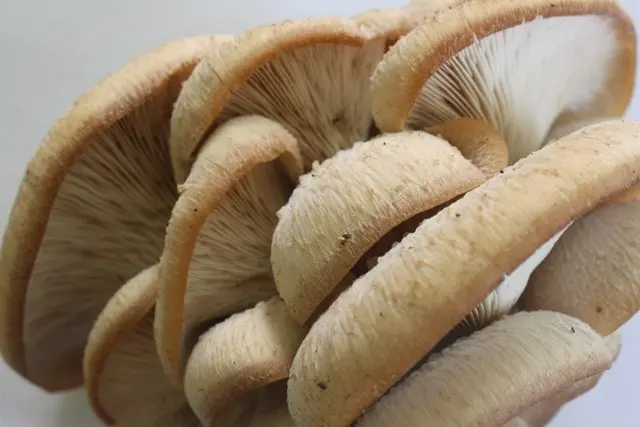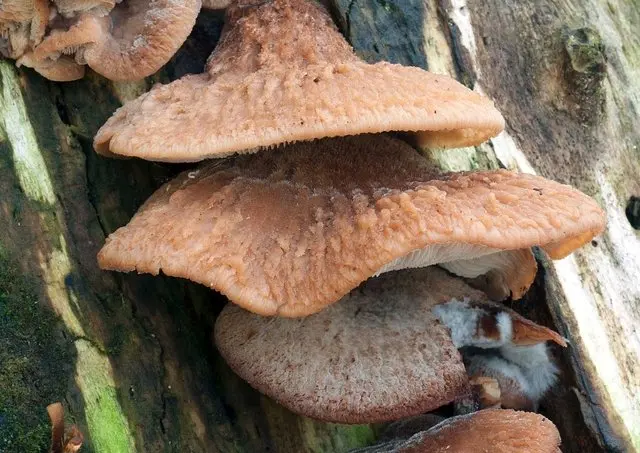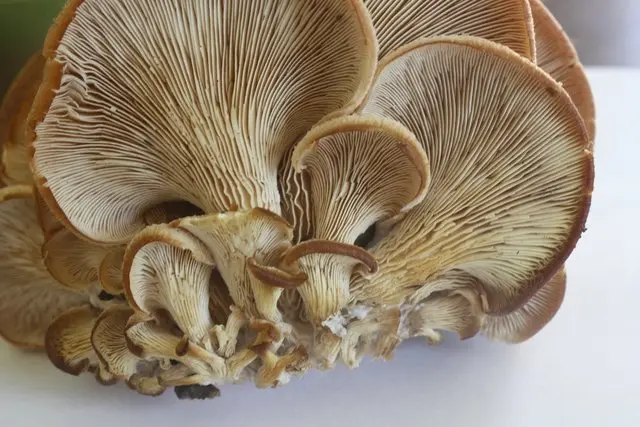Wolf sawfly (Lentinellus vulpinus)
- Division: Basidiomycota (Basidiomycetes)
- Subdivision: Agaricomycotina (Agaricomycetes)
- Class: Agaricomycetes (Agaricomycetes)
- Subclass: Incertae sedis (of uncertain position)
- Order: Russulales (Russulovye)
- Family: Auriscalpiaceae (Auriscalpiaceae)
- Genus: Lentinellus (Lentinellus)
- Type: Lentinellus vulpinus (Wolf’s sawfly)
:
- Felt sawfly
- wolf sawfly
- Fox agaric
- Lentinus the fox
- Hemicybe vulpina
- Panellus vulpinus
- Pleurotus vulpinus

head: 3-6 cm in diameter, initially kidney-shaped, then tongue-shaped, ear-shaped or shell-shaped, with a turned down edge, sometimes quite strongly wrapped. In adult mushrooms, the surface of the cap is whitish-brown, yellowish-reddish or dark fawn, matte, velvety, longitudinally fibrous, finely scaly.
The caps are often fused at the base and form dense, shingled-like clusters.
Some sources indicate the size of the hat as much as 23 centimeters, but this information seems to the author of this article somewhat doubtful.

Leg: lateral, rudimentary, about 1 centimeter or may be completely absent. Dense, brownish, brown or even almost black.
Plates: descending, frequent, wide, with an uneven serrated edge, characteristic of sawflies. Whitish, whitish-beige, then slightly blushing.

Spore powder: white.
Pulp: white, whitish. Rigid.
Smell: pronounced mushroom.
Taste: caustic, bitter.
The mushroom is considered inedible due to its pungent taste. This “acidity” does not go away even after prolonged boiling. There is no data on toxicity.
It grows on dead trunks and stumps of conifers and hardwoods. Occurs infrequently, from July to September-October. Distributed throughout Europe, the European part of Our Country, the North Caucasus.
It is believed that wolf sawfly can be confused with oyster mushroom, but this “feat” is clearly only for inexperienced mushroom pickers.
Bear sawfly (Lentinellus ursinus) – very similar. Differs in the complete absence of legs.









